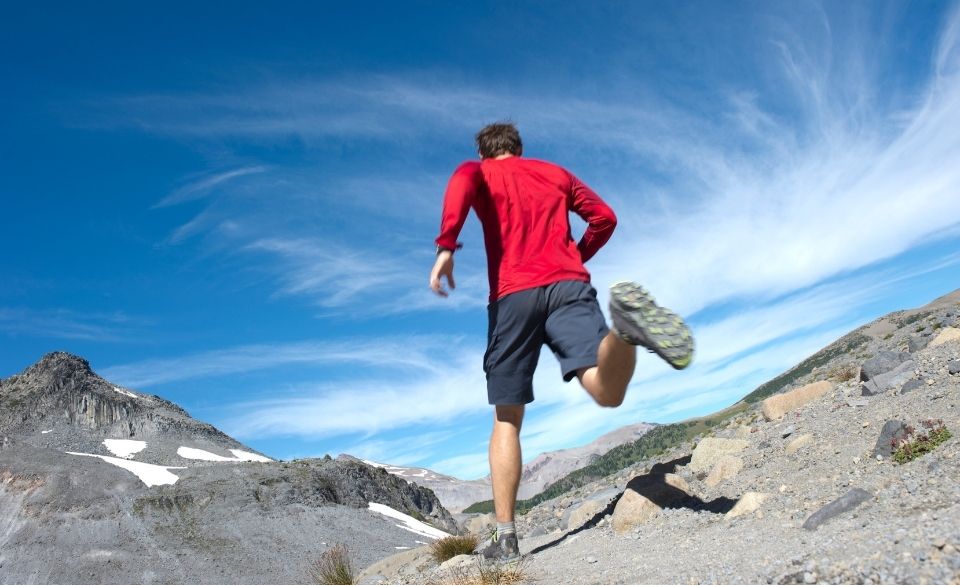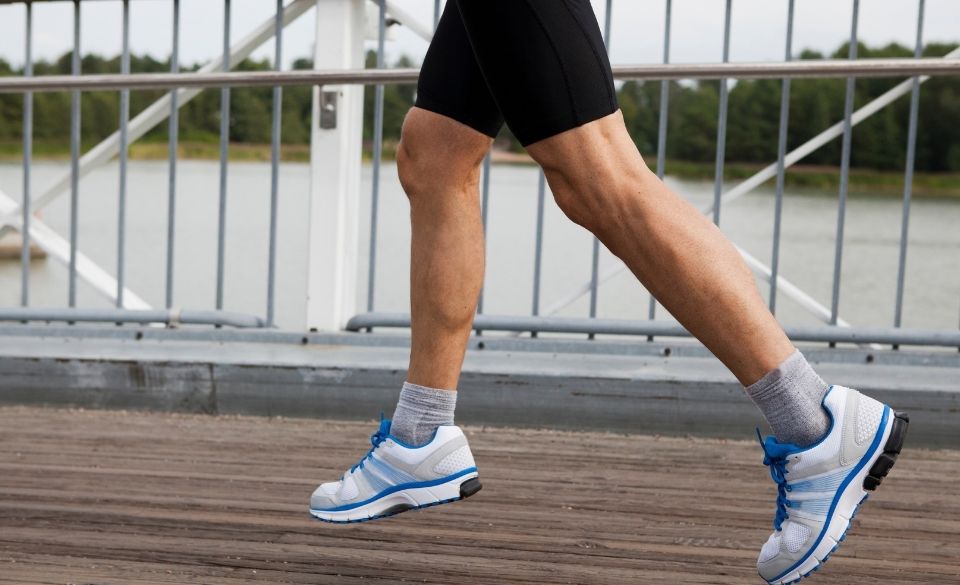
Stride Length Running – What Should You Know? UPDATED 2022
Page Contents
Even though running cadence is one of the best ways to improve running speed, it does have limitations. That is where stride length comes in.
To run faster, you need to know a simple calculation. This calculation is (Running speed = Stride length x cadence).
That means the only other way to improve running is speed is by increasing your stride length. However, this is not the only benefit. Knowing your optimal stride length can go a long way in helping to improve your running economy, allowing you to run faster over longer distances.
In this article, we discuss why stride length running is important and what is the ideal stride length. So, keep reading to learn more.
What Is Stride Length?
Stride length is the distance between the same point of contact to the ground on the same foot
Stride length is measured by the distance covered when you take one full stride. This is usually measured heel to heal. For most people, their right and left stride lengths are equal. However, there may be a variation if the person is injured or has one leg shorter than the other.
There are numerous ways to measure stride length. One is through a measurement device like a Garmin or Suunto watch. The other way is manual, which is done by dividing the number of steps you have taken and dividing it by two. Then take the result and divide it by the distance you have run.
Distance in feet/number of strides = stride length.
However, the most common and easiest way to measure your stride length running is by the use of a watch and foot pod. This will give you a real-time average of your stride length and stride rate.

Stride Length Running – Why Is It Important?
Stride length and stride rate are vital factors in running. Improving both of these can help to increase your performance and improve your economy.
While many people say that shortening your stride can help you run faster and longer. However, there comes a point where your stride rate cannot be increased. This is when increasing your stride length can help you cover more distance with each step. But if you increase your stride length too much, you may end up over striding and landing inefficiently, causing you to place more stress on the body and legs.
Stride length will vary between the distances you run. Generally, shorter distances will promote a longer stride. A recent study found that the average stride length of a marathon runner was 4 feet 10 inches, while an 800m runner averaged 6 feet 8 inches.
Additional analysis of stride length found that the most efficient stride length is dependent on height. Another study found that a sprinter’s stride length was equal to 1.14 to 1.17 times the runner’s height.
Longer strides tend to use more energy. That means runners that can hold a longer stride are usually much fitter than their counter part. However, the length of the stride that is right for each person relies a lot on hip mobility and flexibility. That means if you have a lack of mobility in the hip socket, you won’t be able to increase your stride without promoting bad technique.
If you are wanting to increase your stride length running, and you have already increased your cadence, you should improve the mobility of your hip and strengthen your glute muscles. Strong glutes will help you to pull your leg behind you after each step, it will also stop your gait from coming out of alignment.
In short, increasing your stride length will help you run faster and more economically. However, to find the perfect stride length, gait analysis should be done and you should spend time strengthening the glutes, hamstrings, and lower back muscles.
Alternatively, to promote a longer stride you can add stride outs 2 to 3 times a week. This will help increase your stride length naturally and will help speed up your stride rate in the process.
Average Stride Length in Running
A study was done by geeksonfeet.com of 300 runners. They found that there was a significant variation in stride length between the slower runners and faster runners. Runners that finished a marathon in over 4 hours 30 minutes had an average stride length of 100cm. Runners that finished in under 3 hours had an average stride length of 130cm.
Based on this data, you can see that stride length increases with speed and those elite runners generally have a longer stride than amateur runners. For example, some of the world’s best runners like Kipchoge and Mo Farah both get close to a two-meter stride length.
Taller runners will also have a longer stride compared to shorter runners.
Based on speed, your stride length will shorten when the distance becomes longer. The average can change as much as 10cm when comparing a 5km run to a half marathon.
Also remember there are other factors that can affect stride length. These include terrain, speed, distance, fitness, mobility and wind.

Ideal Stride Length
Just like cadence, stride length is highly individual. Your stride length will depend a lot on the speed you run, the mobility in the hips, and the distance of the run. That means there is no ideal stride length to run at.
However, there are ways to promote a better stride and that is through regular strength training, mobility work, and running drills. By doing so, you will naturally improve your stride length and become more efficient, which leads to faster running.
If you are unsure if your stride length is correct, you should get a gait analysis done. A gait analysis can help you analyze the length of your stride over different speeds. Thus allowing you to see how your body reacts and to see whether you may need to shorten or lengthen your stride.



